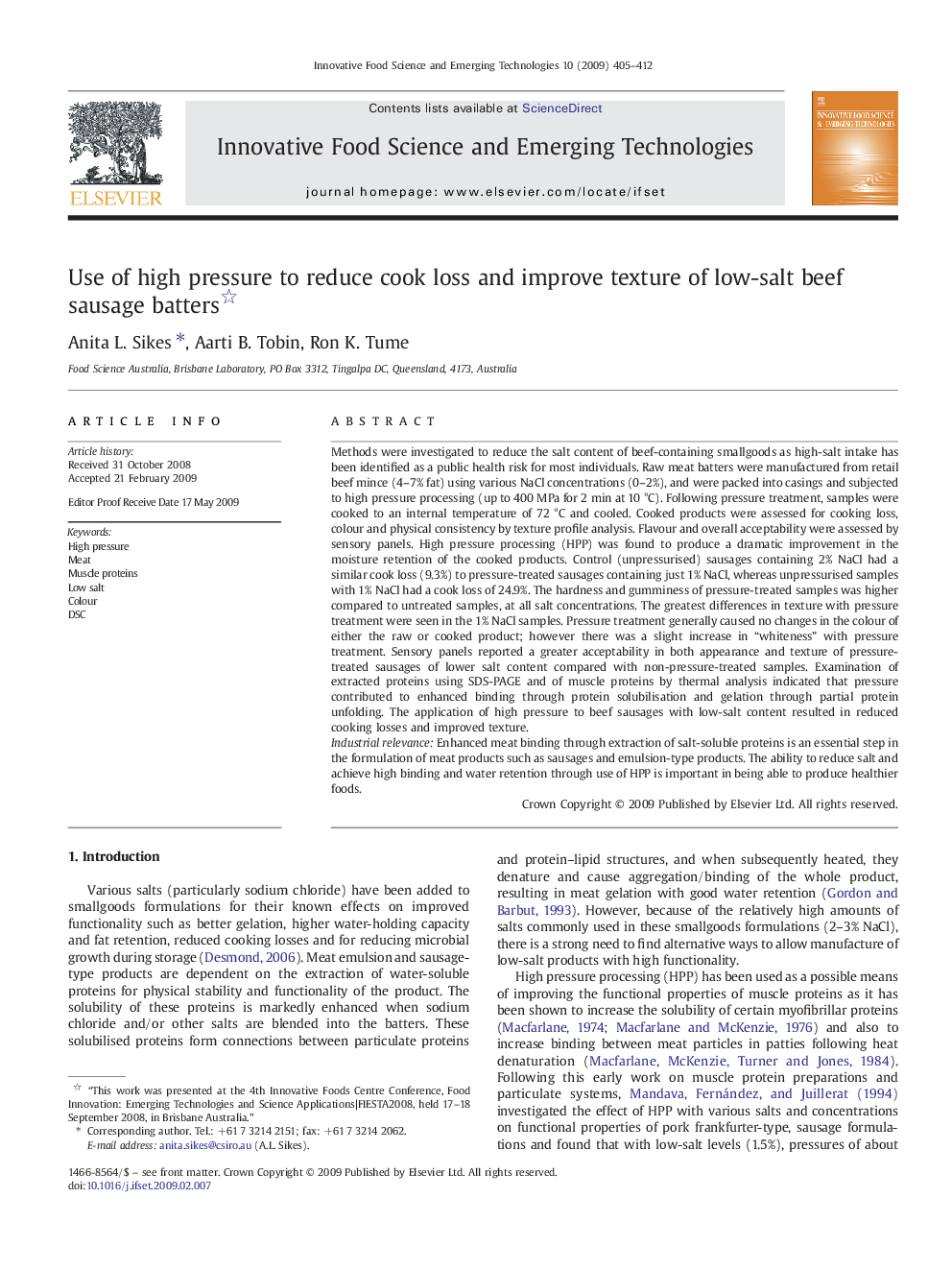| Article ID | Journal | Published Year | Pages | File Type |
|---|---|---|---|---|
| 2087049 | Innovative Food Science & Emerging Technologies | 2009 | 8 Pages |
Methods were investigated to reduce the salt content of beef-containing smallgoods as high-salt intake has been identified as a public health risk for most individuals. Raw meat batters were manufactured from retail beef mince (4–7% fat) using various NaCl concentrations (0–2%), and were packed into casings and subjected to high pressure processing (up to 400 MPa for 2 min at 10 °C). Following pressure treatment, samples were cooked to an internal temperature of 72 °C and cooled. Cooked products were assessed for cooking loss, colour and physical consistency by texture profile analysis. Flavour and overall acceptability were assessed by sensory panels. High pressure processing (HPP) was found to produce a dramatic improvement in the moisture retention of the cooked products. Control (unpressurised) sausages containing 2% NaCl had a similar cook loss (9.3%) to pressure-treated sausages containing just 1% NaCl, whereas unpressurised samples with 1% NaCl had a cook loss of 24.9%. The hardness and gumminess of pressure-treated samples was higher compared to untreated samples, at all salt concentrations. The greatest differences in texture with pressure treatment were seen in the 1% NaCl samples. Pressure treatment generally caused no changes in the colour of either the raw or cooked product; however there was a slight increase in “whiteness” with pressure treatment. Sensory panels reported a greater acceptability in both appearance and texture of pressure-treated sausages of lower salt content compared with non-pressure-treated samples. Examination of extracted proteins using SDS-PAGE and of muscle proteins by thermal analysis indicated that pressure contributed to enhanced binding through protein solubilisation and gelation through partial protein unfolding. The application of high pressure to beef sausages with low-salt content resulted in reduced cooking losses and improved texture.Industrial relevanceEnhanced meat binding through extraction of salt-soluble proteins is an essential step in the formulation of meat products such as sausages and emulsion-type products. The ability to reduce salt and achieve high binding and water retention through use of HPP is important in being able to produce healthier foods.
